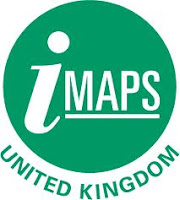Today I would like to present the first of several special "Alumni Features".
I have asked several of our former MISEC colleagues to tell us about their new life in the industry in UK or abroad. This will be the occasion for some to discover what kind of jobs are accessible after a PhD in MISEC, how these people are doing, what are their struggles (if any!) and what do they think about the MEMS job market in Scotland or Europe.
Dominik Weiland ("Dom" for the old ones!), who did his PhD under the supervision of Prof. Marc Desmulliez and Dr J.F. Snowdon in the manufacturing of 2D Optical Fibre Arrays, has been the first to answer my call, and here are his words of wisdom!
 MISEC blog: Hi Dom, can you describe us your career since you graduated?
MISEC blog: Hi Dom, can you describe us your career since you graduated?
After graduating from HWU I joined the
Institute for System Level Integration (first based in Livingston later moved to Heriot Watt campus) as MEMS Design Engineer. After several years of working on diverse technology transfer and research projects with both SMEs and Multi-nationals and iSLIs partner universities I decided it was time to move on and head back home. So in 2010 I joined the sensors group of
TRW Automotive based in Germany on Lake Constance co-developing MEMS sensors for automotive safety applications together with large MEMS sensor suppliers.
MISEC blog: What do you like most in your job? Is there something you would like to change?
What I like a lot is the fact that I get to see how the "big-boys" amongst the sensor manufacturers go about their business, and to realize that everyone "just cooks with water" as we say in German.
I also find myself travelling quite a bit to attend supplier audits, design reviews, customer meetings etc.
Having said that, I enjoy travelling but the downside is that I am away from my family a lot. So if I could change could change something I would take them along.
MISEC blog: So far what has been your biggest challenge in your professional career?
Sitting in one office with Markus for 3 years... (!!!)
MISEC blog: And as a conclusion, how do you find the job market in Europe for a MEMS engineer?
I would say the job market is very positive right now, good MEMS engineers seem to be at a premium resulting in long delays when filling a position and an excellent negotiation position for the prospective employee. Sadly for Scotland and the UK however, the MEMS job market in mainland Europe seems to be more vibrant with more choice of potential employers.
Many thanks for your time, and all the best!










